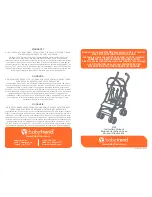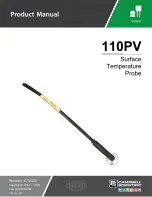
d3: Defrosting time limit
Here the maximal defrosting time can be adjusted. According to this time frame, defrosting is
terminated even if the evaporator is not warm enough to be ice-free.
d6: Indication of the refrigerating chamber temperature during defrosting
It is to be assumed that the refrigerating chamber temperature slightly rises during the defrosting
process. d6=0 indicates the actual refrigerating chamber temperature during the defrosting
process. d6=1 indicates the temperature determined just before the start of defrosting until the
setpoint of the refrigerating chamber is reached again after the defrosting process is completed.
Thus, an irritation of the operator during defrosting can be avoided. In the case of emergency, the
display flashes and the actual temperature of the refrigerating chamber is indicated.
d7: Drainage time
Completed defrosting is immediately followed by a drainage period, in order to let the evaporator
drip off. During drainage time, the exits compressor and ventilator are switched off.
A0: Switching hysteresis for alarm
The hysteresis of the alarm contact is asymmetrically, set downward at the maximum alarm value
upward at the minimum alarm value.
A1/A2: Minimum/maximum limit values
The limit values serve for monitoring of the refrigerating chamber temperature. They are relative,
i.e. going along with the setpoint S1 of the refrigerating chamber. Alarm is released when
exceeding maximum limit value or when falling below the minimum limit value:
The actual value display flashes, the buzzer (if available) goes off intermittently and the actual
temperature of sensor F1 is indicated (if there is no sensor error).
At A1=0 or A2=0 the respective limit value alarm is inactive.
The buzzer can be turned off with the DOWN key, the display continues flashing until the alarm is
turned off.
A3: Alarm suppression time after “cooling on” or data record switch-over
After switching cooling on or a data record switch-over, an alarm is suppressed for the adjusted
time, i.e. the refrigerant plant can get to work temperature without releasing alarm.
A6: Alarm suppression time after temperature alarm
If the refrigerating chamber temperature exceeds the limit values adjusted at A1, A2, normally a
temperature alarm should be released.
With the suppression time set at A6 the alarm release can be delayed.
A7: Alarm suppression time after defrosting
Temperature alarm is avoided for the adjusted time after defrosting, in order to enable the plant to
get back to the normal operating conditions (see A1, A2).
A9: Switching sense alarm exit
Depending on application, the alarm exit requires a normally-closed or a normally-open contact. At
setting A9=1 the relay tightens in normal operation and opens in the case of emergency. That way
also a voltage failure of the controller can be detected (relay dead = alarm) for an external alarm
chain.
F4: Defrosting behaviour
At F4=0 the ventilator is switched off during defrosting.
At F4=1 the ventilator continues to run also during defrosting (normal cooling range above 0°C).
F5: Ventilator delay after defrosting
Following drainage time d7, start of the ventilator can be delayed until the evaporator has
sufficiently cold air again. If the ventilator started immediately, the warm air resulting from the



































